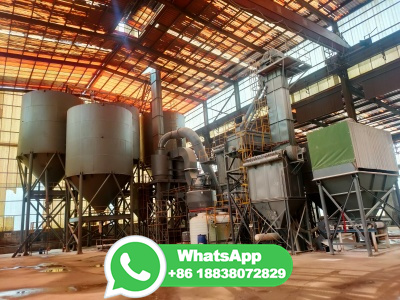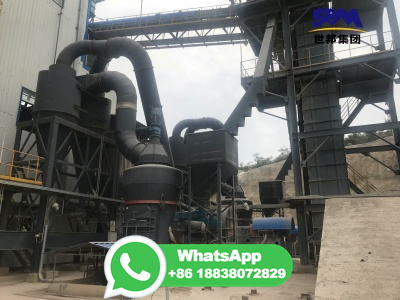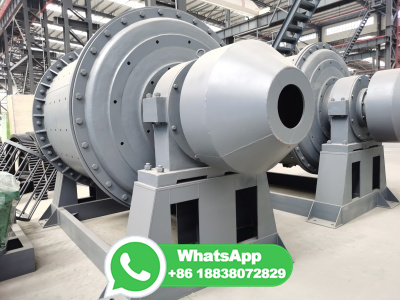
Pressure measurement sensors are used for a range of applications, including measuring the level of material in a tank and how much liquid or air pressure has built within a pipe. When measuring a material, the pressure sensor is placed on the bottom of the tank to measure the head pressure or the weight of that liquid on to the sensors ...
WhatsApp: +86 18203695377
A good example is the air pressure that occurs across the surface of the earth. Differences exerted by mechanical or thermal means in the atmosphere can cause the pressure to rise or fall, and create wind, a thunderstorm, or a bright sunny sky. Differential pressure (dP), as the name suggests, is the difference in the pressure measurements ...
WhatsApp: +86 18203695377
Adjusting a fixed internal circulating load, defined by the pressure drop over the mill, the product rate decreases. Fig. 4 a clearly displays that an increase of working pressure increases the product rate. Variation of product rate with working pressure at 310 rpm and 400 rpm classifier rotor speed for tested gold ore is given in Fig. 6 a.
WhatsApp: +86 18203695377
Analysis of the results shows the mill pressure differential and the mill power consumption are a little higher with the dynamic classifier fitted. A significant fraction of the increases measured is due to the harder coal being ground, 49 v 52 HGI, during the post conversion guarantee test at a nominal coal flow of 36 t/h.
WhatsApp: +86 18203695377
Definition and Types Explained' for more info. Differential pressure, in general, is a measure of pressure where the reading and reference values are variable. Differential pressure is calculated by subtracting one of these values from the other. If Pipe A flows at 100 psi and Pipe B flows at 30 psi, the differential pressure would be 70 psi.
WhatsApp: +86 18203695377
What is Differential Pressure? Differential pressure is essentially the difference in pressure between two given points. It is a type of pressure measured within different industries using differential pressure sensors. There are 3 common types of pressure; · Differential Pressure. · Gauge Pressure. · Absolute pressure.
WhatsApp: +86 18203695377
On many boilers, air flow is the measured differential between the furnace inlet and the boiler outlet. This takes the differential of the hot gases as they flow through the furnace, across the convection section, and out the stack. In most cases, the differential ranges from to inches of water. Errors From Drift and Zero Shift Most ...
WhatsApp: +86 18203695377
3. pulverizer/mill system One of the critical power plant components that is relied upon to convert the energy stored in coal into electricity is the coal pulverizer or mill. The coal flow is controlled by the feeder, allowing coal to flow into the pulverizer mill. The pulverized coal and air mixture is then transport to the boiler ...
WhatsApp: +86 18203695377
Inputs of the coal mill model are coal flow into the mill (Wc), primary air flow (Wa), primary air inlet temperature (Tin) and primary air differential pressure ( ¨ Ppa) which are us ed in
WhatsApp: +86 18203695377
The coal mill used in the coalfired power plants is modeled in view of the controller design rather than the educational simulator. The coal mass flow and the outlet temperature are modeled by ...
WhatsApp: +86 18203695377
A verticaltype pulverizer bites into coal between a rotating table and roller to pulverize the coal through the action of crushing and grinding. Mitsubishi Power offers a varied lineup from small to high capacity through two types of pulverizer, MVM and MPS. Overview. Specifications.
WhatsApp: +86 18203695377
The measured output variables are mill x Tmill= temperature of coal mill body differential pressure of the mill (¨Pmill) (flow cannot be x Ke = heat transfer constant [kW/] measured directly, hence differential pressure of the mill is measured) and outlet temperature (To). The coal mill model is IV.
WhatsApp: +86 18203695377
Equation of mill differential pressure. P m i l l, is mainly a result of the primary air differential pressure and the mill product differential pressure. The mill product differential pressure depends on the amount of coal carried by the primary air and the recirculation coal. Therefore, the equation of P m i l l is established as Eq.
WhatsApp: +86 18203695377
Coal is a black or brownishblack sedimentary rock that can be burned for fuel and used to generate electricity. It is composed mostly of carbon and hydrocarbons, which contain energy that can be released through combustion (burning). Coal is the largest source of energy for generating electricity in the world, and the most abundant fossil fuel ...
WhatsApp: +86 18203695377
Other indicators of performance include pressure differential, inlet temperature, temperature differential, exhaust gas flow rate, cleaning mechanism operation and fan current. The Compliance Assurance Monitoring (CAM) Technical Guidance Document (TGD) is a source of information on monitoring approaches for different types of control devices.
WhatsApp: +86 18203695377
A Primer on Coal Fineness. Coal fineness is a relative measurement of particle size distribution typically applied to the product leaving a pulverizer.
WhatsApp: +86 18203695377
Differential pressure (especially for early dryers). Steam valve positions for water heating. Basis weight versus standard. Press solidsusually requires grab samples. Press section flows. Size press starch solids. Pocket ventilation temperature. Temperatures through hood exhaust heat recovery systems. Warm water flow from pulp mill.
WhatsApp: +86 18203695377
pressure difference between inlet and outlet, the grain size of the raw material [1, 2]. For VRM the production capacity denotes both the capacity of grinding and drying of mill. The grindability affects the capacity of grinding, type of mill and roller pressure. The capacity of the mill is calculated Using G K * D
WhatsApp: +86 18203695377
Mill discharge temperature and differential pressure have a strong effect on efficiency and safety of a coal fired power plant. Therefore, it is imperative that they are closely monitored and controlled during mill operation to keep their levels within a predetermined safe and efficient operating range regardless of the rate at which the raw coal is fed to the mill.
WhatsApp: +86 18203695377
Since it is a pressurised mill to measure the pressure at each point a constant flow of measurement air is maintained with the help of orifice and buffer tank pressure controller and differencial back pressure effected due to change in coal mixture bed level is measured which indicate indirectly the coal mixture level inside the mill.
WhatsApp: +86 18203695377
To summarize the coal mill controls, they may be divided basically into two major categories: 1. To control the quality of coal being sent to the burners located on the furnace walls. The word quality here means the temperature and fineness of the PF. The set temperature values are dependent on the percentage of volatile matter that exists in ...
WhatsApp: +86 18203695377
The current drawn by the mill motor and the mill differential pressure also have a complex but significant relationship with the coal moisture and the HGI (Agrawal et al., 2015b). The outlet temperature set point of the coal mill is influenced by the volatile matter content of the incoming coal (Basu Debnath, 2014). Some parameters such as ...
WhatsApp: +86 18203695377
Density of Water = 1000 kg/m 3; 1 m 3 of Water = 1000 kg. Magnetite Density = 5170 kg/m 3. [image 145329] [image 145330] For example, a 400 tph feed to a dense medium process equates to a volumetric flow rate of 1000 gallons/min or m 3 /min. At a 4:1 mediumtocoal ratio, the volume of medium is m 3 /min.
WhatsApp: +86 18203695377